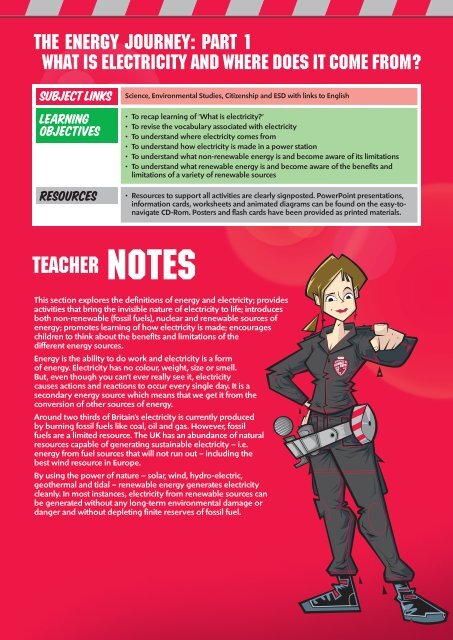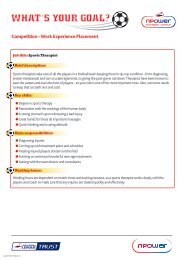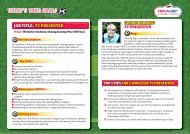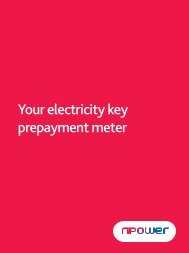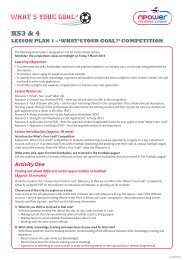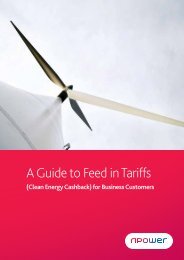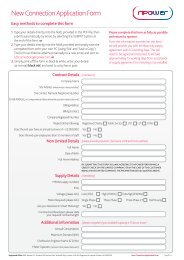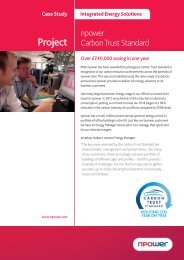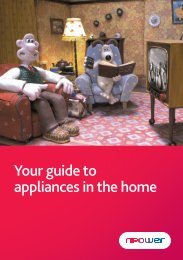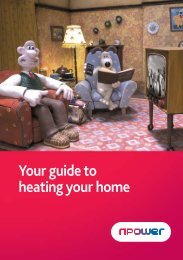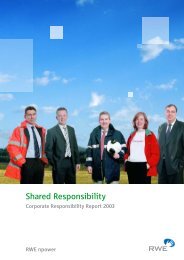Web Download booket for breaking - The Climate cops
Web Download booket for breaking - The Climate cops
Web Download booket for breaking - The Climate cops
You also want an ePaper? Increase the reach of your titles
YUMPU automatically turns print PDFs into web optimized ePapers that Google loves.
THE ENERGY JOURNEY: PART 1<br />
WHAT IS ELECTRICITY AND WHERE DOES IT COME FROM?<br />
Subject links<br />
Learning<br />
objectives<br />
RESOURCES<br />
Science, Environmental Studies, Citizenship and ESD with links to English<br />
• To recap learning of ‘What is electricity?’<br />
• To revise the vocabulary associated with electricity<br />
• To understand where electricity comes from<br />
• To understand how electricity is made in a power station<br />
• To understand what non-renewable energy is and become aware of its limitations<br />
• To understand what renewable energy is and become aware of the benefits and<br />
limitations of a variety of renewable sources<br />
• Resources to support all activities are clearly signposted. PowerPoint presentations,<br />
in<strong>for</strong>mation cards, worksheets and animated diagrams can be found on the easy-tonavigate<br />
CD-Rom. Posters and flash cards have been provided as printed materials.<br />
TEACHER NOTES<br />
This section explores the definitions of energy and electricity; provides<br />
activities that bring the invisible nature of electricity to life; introduces<br />
both non-renewable (fossil fuels), nuclear and renewable sources of<br />
energy; promotes learning of how electricity is made; encourages<br />
children to think about the benefits and limitations of the<br />
different energy sources.<br />
Energy is the ability to do work and electricity is a <strong>for</strong>m<br />
of energy. Electricity has no colour, weight, size or smell.<br />
But, even though you can’t ever really see it, electricity<br />
causes actions and reactions to occur every single day. It is a<br />
secondary energy source which means that we get it from the<br />
conversion of other sources of energy.<br />
Around two thirds of Britain’s electricity is currently produced<br />
by burning fossil fuels like coal, oil and gas. However, fossil<br />
fuels are a limited resource. <strong>The</strong> UK has an abundance of natural<br />
resources capable of generating sustainable electricity – i.e.<br />
energy from fuel sources that will not run out – including the<br />
best wind resource in Europe.<br />
By using the power of nature – solar, wind, hydro-electric,<br />
geothermal and tidal – renewable energy generates electricity<br />
cleanly. In most instances, electricity from renewable sources can<br />
be generated without any long-term environmental damage or<br />
danger and without depleting finite reserves of fossil fuel.
ACTIVITYPLANNERS<br />
In the <strong>Climate</strong> Cops resource you will find a suite of activities that will help you to deliver the learning<br />
objectives outlined <strong>for</strong> <strong>The</strong> Energy Journey: Part 1 – “What is electricity and where does it come from?”<br />
Every activity is supported with PowerPoint slides and relevant stimulus materials e.g. worksheet, poster,<br />
flash card, animated diagram, in<strong>for</strong>mation card and/or interactive whiteboard game.<br />
You can select the activities that are best suited to your pupils and devise lesson plans accordingly. To give<br />
you a flavour of what to expect, we have detailed one of the activites below.<br />
TASTER ACTIVITY…<br />
Sourcing Electricity<br />
Use the ‘Sourcing Electricity’ PowerPoint slides to explain that electricity is created from the conversion of<br />
other sources of energy. <strong>The</strong> presentation can be used in conjunction with the ‘Sourcing Electricity’ poster<br />
and corresponding flash cards to introduce pupils to renewable and non-renewable sources of energy.<br />
Detailed examples from each category are provided.<br />
Pupils are given a series of energy cards. Each card contains a picture, a description and key facts about an<br />
energy source. <strong>The</strong> challenge is to correctly sort the cards into renewable and non-renewable energy sources.<br />
A drag and click whiteboard activity provides an alternative means <strong>for</strong> volunteers to attempt the sorting<br />
process. Once a correct answer is reached pupils can re-sort their own cards and stick them into their<br />
workbooks <strong>for</strong> reference.<br />
<strong>The</strong>n divide the class into groups and assign one source of energy to each group. Using the available<br />
resources the groups should create a mind map of the benefits and limitations of that particular energy source.<br />
Resources<br />
ENERGY JOURNEY: PART 1 – POWERPOINT SLIDES WITH<br />
WHITEBOARD ACTIVITY X-X<br />
RENEWABLE AND N0N-RENEWABLE – FLASH CARDS (X2)<br />
SOURCING ELECTRICITY – CLASS POSTER<br />
ENERGY CARDS – WORKSHEET 1<br />
CREATING ELECTRICITY - INFORMATION CARDS 1 – 6<br />
CREATING ELECTRICITY – ANIMATIONS<br />
Resources<br />
You can download the energy cards<br />
and flash cards when you go back to<br />
the ‘Lesson Planner’ page of this site.<br />
<strong>The</strong>y give you the opportunity to see<br />
the type of materials you can expect<br />
to find in the <strong>Climate</strong> Cops programme.


